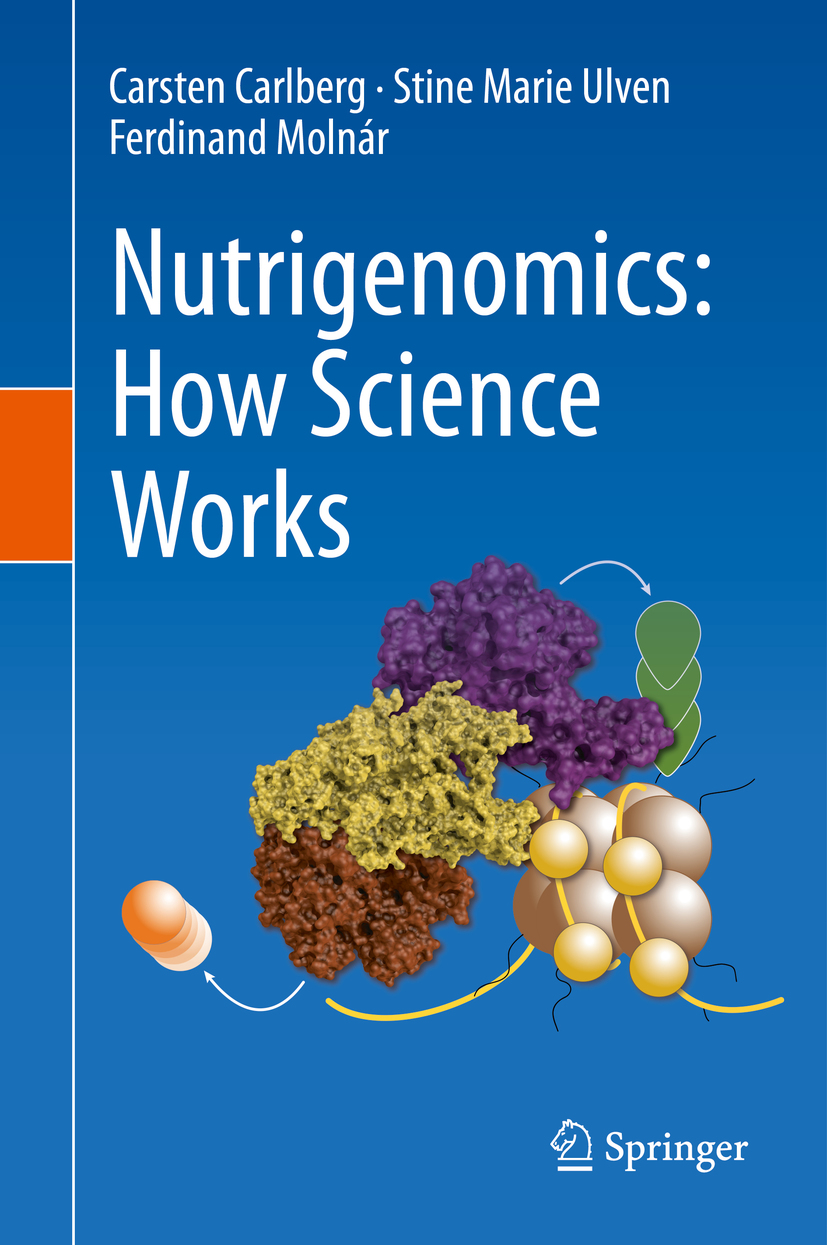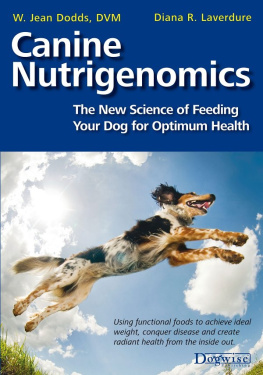Carsten Carlberg - Nutrigenomics: How Science Works
Here you can read online Carsten Carlberg - Nutrigenomics: How Science Works full text of the book (entire story) in english for free. Download pdf and epub, get meaning, cover and reviews about this ebook. year: 2020, publisher: Springer International Publishing, genre: Romance novel. Description of the work, (preface) as well as reviews are available. Best literature library LitArk.com created for fans of good reading and offers a wide selection of genres:
Romance novel
Science fiction
Adventure
Detective
Science
History
Home and family
Prose
Art
Politics
Computer
Non-fiction
Religion
Business
Children
Humor
Choose a favorite category and find really read worthwhile books. Enjoy immersion in the world of imagination, feel the emotions of the characters or learn something new for yourself, make an fascinating discovery.
- Book:Nutrigenomics: How Science Works
- Author:
- Publisher:Springer International Publishing
- Genre:
- Year:2020
- Rating:3 / 5
- Favourites:Add to favourites
- Your mark:
- 60
- 1
- 2
- 3
- 4
- 5
Nutrigenomics: How Science Works: summary, description and annotation
We offer to read an annotation, description, summary or preface (depends on what the author of the book "Nutrigenomics: How Science Works" wrote himself). If you haven't found the necessary information about the book — write in the comments, we will try to find it.
Nutrigenomics: How Science Works — read online for free the complete book (whole text) full work
Below is the text of the book, divided by pages. System saving the place of the last page read, allows you to conveniently read the book "Nutrigenomics: How Science Works" online for free, without having to search again every time where you left off. Put a bookmark, and you can go to the page where you finished reading at any time.
Font size:
Interval:
Bookmark:


This Springer imprint is published by the registered company Springer Nature Switzerland AG.
The registered company address is: Gewerbestrasse 11, 6330 Cham, Switzerland
Our daily diet is more than a collection of carbohydrates, lipids, and proteins, minerals, and vitamins that provide energy and serve as building blocks of our life. It is also the most dominant environmental signal to which we are exposed from womb to death. The availability of the sequence of the complete human genome and the consequent development of next-generation sequencing technologies have significantly affected nearly all areas of bioscience. This was the starting point for new disciplines, such as genomics and its subdiscipline nutrigenomics. The fascinating area ofnutrigenomics describes the daily communication between dietary molecules, their metabolites, and our genome. Its genomic components comprise not only the variation of the human genome, such as SNPs (single-nucleotide polymorphisms), but also the dynamic packaging of the genome into chromatin, including all information stored in this epigenome. Moreover, this book discusses the proteins that are involved in the signal transduction between dietary molecules and the genome, such as nuclear receptors, chromatin-modifying enzymes, and energy status-sensing kinases, and their mechanism of action.
Most noncommunicable diseases, such as T2D (type 2 diabetes) and CVDs (cardiovascular diseases), are the basis of lifestyle decisions. They have not only a genetic, inherited component, but to some 80%, they are based on epigenetics (meaning above genetics), i.e., on ourlifestyle choices and environmental exposures, such as what we eat. We cannot change the genes that we are born with, but we can take care of the rest being primarily based on our epigenome. This means that the genetic predisposition for a disease can be counterbalanced by an appropriate healthy lifestyle that modulates the epigenome of the affected tissues. It is well known that there is a high level of individual responsibility for staying healthy, but a detailed understanding of epigenetics provides a molecular explanation for this life attitude. This book describes how nutrition shapes human evolution and demonstrates its consequences for our susceptibility to diseases, such as T2D and atherosclerosis, the underlying cause of most CVDs. Inappropriate diet can yield stress for our cells, tissues, and organs, and then it is often associated with low-grade chronic inflammation. Overnutrition paired with physical inactivity leads to overweight and obesity and results in increased burden for a body that originally was adapted for a life in the savannas of East Africa. Thus, this book does not only discuss about a theoretical topic in science, but it especially talks about real life and our lifelong chat with diet.We are all food consumers; thus, each of us is concerned by the topic of this book and should be aware of its mechanisms of how our key daily lifestyle decision affects our health.
The purpose of this book is to provide an overview on theprinciples of nutrigenomics and their relation to health and disease. We are not aiming to compete with more comprehensive textbooks on molecular nutrition, evolutionary biology, genomics, gene regulation, or metabolic diseases but rather will focus on the essentials and will combine, in a compact form, elements from different disciplines. In order to facilitate the latter, we favor a high figure-to-text ratio following the rule a picture tells more than thousand words.
The content of the book is linked to a series of lecture courses in Molecular Medicine and Genetics, Molecular Immunology, Cancer Biology, and Nutrigenomics that are given by one of us (C. Carlberg) in different forms since 2002 at the University of Eastern Finland in Kuopio. This book represents an updated version of our textbookNutrigenomics(ISBN 978-3-319-30415-1). However, we shortened and simplified the content in order to give also undergraduate students and other people engaged in life sciences an easier start into the topic. This book also relates to our textbooksMechanisms of Gene Regulation(ISBN 978-94-017-7741-4),Human Epigenomics(ISBN 978-981-10-7614-8), andHuman Epigenetics: How Science Works(ISBN 978-3-030-22906-1), the studying of which may be interesting to readers who like to get more detailed information. Following two introductory chapters, the first five chapters of this book will explain the molecular basis of nutrigenomics, while the last three chapters will provide examples for the impact of nutrigenomics on our health and disease. A glossary in the appendix will explain the major specialists terms.
We hope that the readers will enjoy this rather visual book and get as enthusiastic about nutrigenomics as the authors are.
The authors would like to thank Eunike Velleuer, MD, and Andrea Hanel, BSc, for extensive proofreading and constructive criticism.
1,25-dihydroxyvitamin D3
25(OH)D325-hydroxyvitamin D3
3D3-dimensional
-MSH-melanocyte-stimulating hormone
ABCATP-binding cassette
ABLabetalipoproteinemia
ACadenylate cyclase
ACAT1acetyl-CoA acetyltransferase 1
ACCFont size:
Interval:
Bookmark:
Similar books «Nutrigenomics: How Science Works»
Look at similar books to Nutrigenomics: How Science Works. We have selected literature similar in name and meaning in the hope of providing readers with more options to find new, interesting, not yet read works.
Discussion, reviews of the book Nutrigenomics: How Science Works and just readers' own opinions. Leave your comments, write what you think about the work, its meaning or the main characters. Specify what exactly you liked and what you didn't like, and why you think so.










